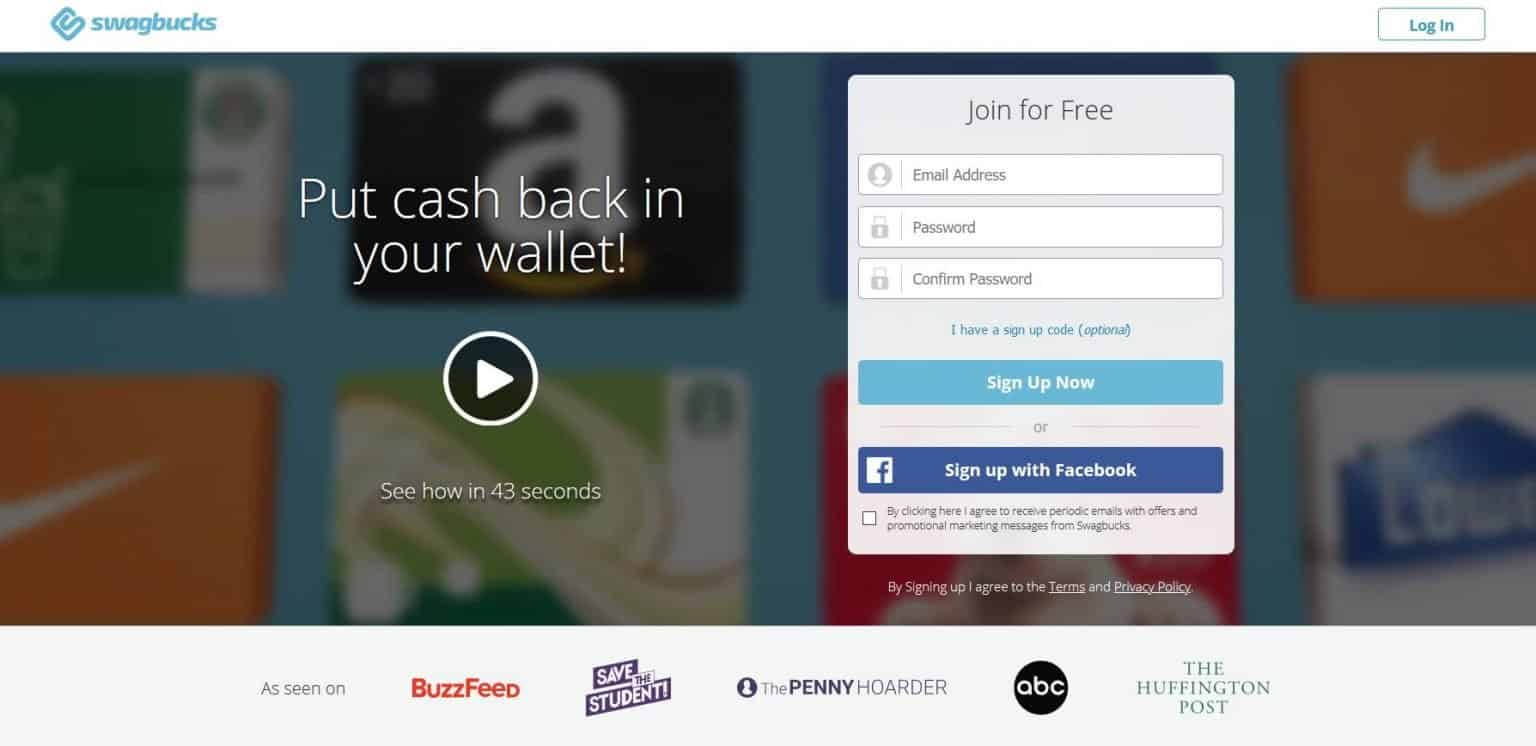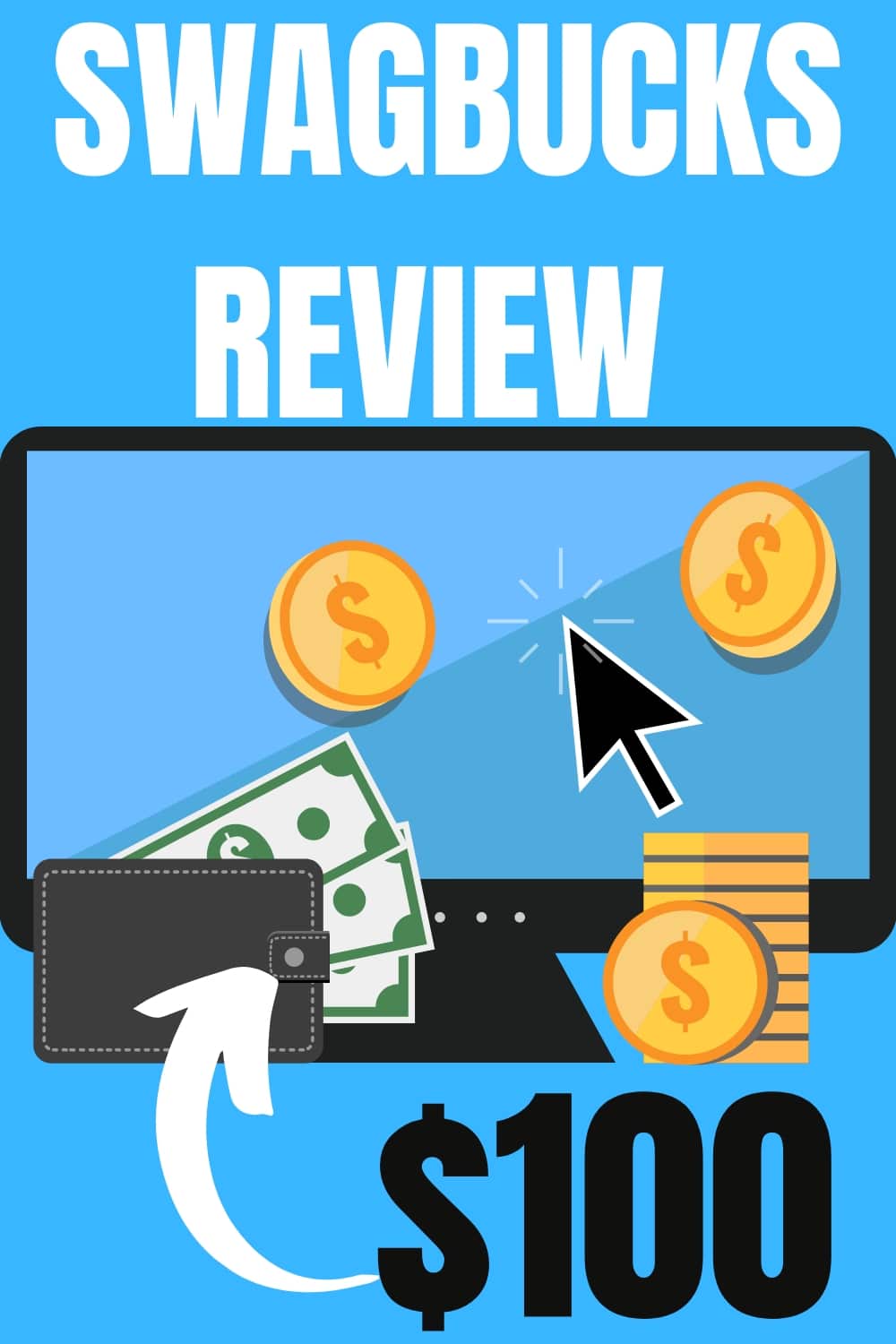What is Swagbucks and How Does it Work?
Swagbucks is a popular rewards platform that allows users to earn points for taking surveys, watching videos, and shopping online. Founded in 2005, Swagbucks has grown to become one of the largest rewards platforms in the world, with over 20 million registered members. The platform’s primary goal is to provide users with a fun and rewarding way to earn money in their free time.
So, how does Swagbucks work? The platform is simple to use: users sign up for a free account, and then they can start earning points by participating in various activities. These activities include taking online surveys, watching videos, shopping online through the Swagbucks portal, and even searching the web using the Swagbucks search engine. For every activity completed, users earn a certain number of points, which can be redeemed for gift cards, cash, or other rewards.
But have you ever wondered how Swagbucks earns money? After all, the platform is free to use, and users can earn rewards without spending a dime. The answer lies in the platform’s revenue model, which is designed to generate income through various channels. In the next section, we’ll take a closer look at the business model behind Swagbucks and explore how it earns money through partnerships and affiliations.
The Business Model Behind Swagbucks: Understanding its Partnerships and Affiliations
Swagbucks’ revenue model is built on a foundation of partnerships and affiliations with various brands and retailers. The platform has established relationships with thousands of companies, including major retailers like Amazon, Walmart, and Target. These partnerships enable Swagbucks to offer its users a wide range of rewards and cashback opportunities, while also generating revenue for the company.
So, how does Swagbucks earn money from these partnerships? The answer lies in the company’s affiliate marketing model. When a user clicks on a link or makes a purchase through the Swagbucks platform, the company earns a commission from the retailer. This commission is typically a percentage of the sale price, and it can range from a few cents to several dollars per transaction.
Swagbucks also earns money by promoting products and services to its users. The platform uses a variety of marketing channels, including email marketing, social media, and display advertising, to promote its partners’ offers. For every sale or lead generated through these promotions, Swagbucks earns a commission from the partner company.
In addition to its affiliate marketing model, Swagbucks also earns money through its partnerships with market research firms. The platform connects users with survey opportunities, and in exchange, the market research firms pay Swagbucks for each completed survey. This revenue stream is an important part of Swagbucks’ business model, as it provides a steady source of income and helps to drive user engagement.
Overall, Swagbucks’ partnerships and affiliations are a key component of its revenue model. By working with thousands of brands and retailers, the platform is able to offer its users a wide range of rewards and cashback opportunities, while also generating revenue for the company. In the next section, we’ll take a closer look at how Swagbucks earns money from surveys and market research.
How Swagbucks Earns Money from Surveys and Market Research
Swagbucks is a popular rewards platform that allows users to earn points for participating in online surveys, watching videos, and shopping online. But have you ever wondered how Swagbucks earns money from these activities? In this section, we’ll delve into the world of online market research and explore how Swagbucks generates revenue from surveys and user data.
Swagbucks partners with various market research firms and brands to provide survey opportunities to its users. These surveys help businesses gather valuable insights into consumer behavior, preferences, and opinions. In return, Swagbucks earns a fee for connecting users with these survey opportunities. This fee is typically based on the number of users who complete the survey, as well as the quality of the data collected.
But that’s not all – Swagbucks also sells user data to third-party companies, which use this information to inform their marketing strategies and product development. This data can include demographic information, browsing habits, and purchase history. By anonymizing and aggregating user data, Swagbucks can provide valuable insights to businesses without compromising user privacy.
So, how does Swagbucks earn money from surveys? The answer lies in the data analytics. By collecting and analyzing user data, Swagbucks can provide targeted survey opportunities to its users. This increases the likelihood of users completing surveys, which in turn generates more revenue for Swagbucks. Additionally, the data collected from surveys can be sold to third-party companies, providing an additional revenue stream.
But what about user privacy? Swagbucks takes user privacy seriously and ensures that all data is anonymized and aggregated before being sold to third-party companies. This means that individual users cannot be identified from the data, and their personal information remains secure.
In conclusion, Swagbucks earns money from surveys and market research by partnering with market research firms, collecting and analyzing user data, and selling this data to third-party companies. By providing targeted survey opportunities and ensuring user privacy, Swagbucks can generate significant revenue from its survey activities. So, the next time you complete a survey on Swagbucks, remember that you’re not only earning rewards – you’re also contributing to the platform’s revenue model.
The Role of Advertising in Swagbucks’ Revenue Model
Swagbucks is a popular rewards platform that generates revenue through various channels, including advertising. In this section, we’ll explore the role of advertising in Swagbucks’ revenue model and how it contributes to the platform’s success.
Swagbucks earns money from advertising through several channels, including display ads, sponsored content, and affiliate marketing. Display ads are a significant source of revenue for Swagbucks, as they allow brands to reach a large and engaged audience. These ads are typically displayed on the Swagbucks website and mobile app, and users can earn rewards for clicking on them or completing specific actions.
Sponsored content is another key advertising channel for Swagbucks. Brands partner with Swagbucks to create sponsored content, such as videos, articles, and quizzes, that are designed to engage users and promote products or services. Swagbucks earns revenue from sponsored content by charging brands for the creation and distribution of this content.
Affiliate marketing is also an important advertising channel for Swagbucks. The platform earns commissions by promoting products or services from other companies and including affiliate links in its content. When a user clicks on one of these links and makes a purchase, Swagbucks earns a commission.
So, how does Swagbucks earn money from advertising? The answer lies in user engagement. Swagbucks uses data and analytics to target ads effectively, ensuring that users see relevant and engaging content. This increases the likelihood of users clicking on ads, completing actions, or making purchases, which in turn generates revenue for Swagbucks.
Swagbucks also uses gamification and rewards to encourage users to engage with ads. For example, users can earn rewards for watching videos, completing quizzes, or clicking on display ads. This creates a win-win situation, as users earn rewards and brands reach a engaged audience
Swagbucks’ E-commerce Integration: How it Earns Money from Online Shopping
Swagbucks is a popular rewards platform that allows users to earn points for taking surveys, watching videos, and shopping online. In this section, we’ll explore how Swagbucks earns money from online shopping, including its relationships with retailers and the use of affiliate links.
Swagbucks has partnered with thousands of retailers, including big-box stores, online marketplaces, and specialty shops. These partnerships allow Swagbucks to earn commissions on sales generated through its platform. When a user clicks on a retailer’s link on Swagbucks and makes a purchase, Swagbucks earns a commission on the sale.
Swagbucks uses affiliate links to track sales and earn commissions. Affiliate links are unique URLs that contain a tracking code, which allows Swagbucks to identify the source of the sale and earn a commission. This commission is typically a percentage of the sale price, and it can vary depending on the retailer and the product.
Users can earn cashback and rewards for shopping through Swagbucks by clicking on retailer links and making purchases. Swagbucks offers a variety of rewards, including gift cards, PayPal cash, and donations to charity. Users can also earn points for shopping through Swagbucks, which can be redeemed for rewards or cash.
Swagbucks’ e-commerce integration is a key component of its revenue model. By partnering with retailers and using affiliate links, Swagbucks is able to earn commissions on sales and provide rewards to its users. This creates a win-win situation, as users earn rewards and retailers reach a targeted audience.
So, how does Swagbucks earn money from online shopping? The answer lies in its relationships with retailers and the use of affiliate links. By partnering with thousands of retailers and using affiliate links to track sales, Swagbucks is able to earn commissions on sales and provide rewards to its users.
Swagbucks’ e-commerce integration is also driven by user engagement. The platform uses data and analytics to target users with relevant retailer offers and promotions, increasing the likelihood of sales and commissions. Additionally, Swagbucks uses gamification and rewards to encourage users to shop through its platform, further driving revenue and engagement.
Overall, Swagbucks’ e-commerce integration is a key component of its revenue model, allowing the platform to earn commissions on sales and provide rewards to its users. By partnering with retailers and using affiliate links, Swagbucks is able to drive revenue and engagement, while also providing value to its users.
The Impact of User Engagement on Swagbucks’ Revenue
User engagement is a crucial factor in driving revenue for Swagbucks. The platform’s ability to encourage users to participate in various activities, such as taking surveys, watching videos, and shopping online, is essential to its success. Swagbucks uses a range of strategies to promote user engagement, including gamification, rewards, and incentives.
One of the key ways Swagbucks encourages user engagement is through its rewards system. Users can earn points, known as SB, for completing various tasks, which can be redeemed for gift cards, cash, or other rewards. This system creates a sense of motivation and encourages users to continue participating in activities to earn more rewards.
Swagbucks also uses gamification techniques, such as leaderboards and challenges, to make the user experience more engaging and fun. For example, users can participate in daily challenges to earn bonus SB or compete with other users to achieve the highest score. These features create a sense of competition and community, which helps to drive user engagement and retention.
In addition to its rewards system and gamification techniques, Swagbucks also uses data analytics to personalize the user experience and promote engagement. The platform uses user data to recommend relevant surveys, videos, and shopping opportunities, which helps to increase user participation and satisfaction.
Understanding how Swagbucks earns money is essential to appreciating the importance of user engagement in its revenue model. By encouraging users to participate in various activities, Swagbucks can generate revenue from a range of sources, including advertising, affiliate marketing, and market research. As users engage with the platform, they provide valuable data and insights that can be used to improve the user experience and drive revenue growth.
In conclusion, user engagement is a critical component of Swagbucks’ revenue model. By using a range of strategies, including gamification, rewards, and incentives, the platform can encourage users to participate in various activities and drive revenue growth. As users engage with the platform, they provide valuable data and insights that can be used to improve the user experience and drive revenue growth, ultimately answering the question of how does Swagbucks earn money.
Swagbucks’ Competitors and Market Positioning
Swagbucks operates in a competitive rewards and loyalty market, with several other platforms offering similar services. Some of its main competitors include InboxDollars, MyPoints, and Survey Junkie. However, Swagbucks has managed to differentiate itself from its competitors through its unique revenue model and user engagement strategies.
One of the key factors that sets Swagbucks apart from its competitors is its diversified revenue streams. While many rewards platforms focus solely on surveys or online shopping, Swagbucks earns money from a range of sources, including advertising, affiliate marketing, and market research. This diversified approach allows Swagbucks to maintain a competitive edge and stay ahead of its competitors.
Another factor that contributes to Swagbucks’ success is its user engagement strategies. The platform uses gamification, rewards, and incentives to encourage users to participate in various activities, which helps to drive revenue growth. Swagbucks also uses data analytics to personalize the user experience and promote engagement, which helps to increase user retention and satisfaction.
In terms of market positioning, Swagbucks is well-established as a leading rewards platform. The company has been in operation since 2005 and has built a large user base of over 20 million registered members. Swagbucks has also partnered with several major brands and retailers, including Walmart, Target, and Starbucks, which helps to increase its credibility and appeal to users.
Despite the competition, Swagbucks continues to innovate and expand its services. The platform has recently introduced new features, such as its Swagbucks Live app, which allows users to earn rewards for watching live videos and participating in trivia games. This kind of innovation helps to keep Swagbucks ahead of its competitors and maintain its position as a leading rewards platform.
Understanding how Swagbucks earns money is essential to appreciating its competitive edge in the rewards and loyalty market. By diversifying its revenue streams and using innovative user engagement strategies, Swagbucks has managed to stay ahead of its competitors and maintain its position as a leading rewards platform. As users continue to seek out ways to earn rewards and cashback, Swagbucks is well-positioned to remain a major player in the market.
Conclusion: How Swagbucks’ Revenue Model Drives its Success
In conclusion, Swagbucks’ revenue model is a complex and multifaceted system that drives the platform’s success. By understanding how Swagbucks earns money, users can maximize their rewards and take advantage of the platform’s various features. From its partnerships with brands and retailers to its use of data analytics and advertising, Swagbucks has created a robust revenue model that allows it to maintain a competitive edge in the rewards and loyalty market.
One of the key takeaways from this analysis is the importance of user engagement in driving revenue for Swagbucks. By using gamification, rewards, and incentives, the platform encourages users to participate in various activities, which helps to drive revenue growth. Additionally, Swagbucks’ use of data analytics to personalize the user experience and promote engagement is a key factor in its success.
Another important aspect of Swagbucks’ revenue model is its diversified approach to earning money. By generating revenue from multiple sources, including surveys, online shopping, and advertising, Swagbucks is able to maintain a stable and profitable business model. This approach also allows the platform to adapt to changes in the market and stay ahead of its competitors.
Overall, Swagbucks’ revenue model is a key factor in its success as a leading rewards platform. By understanding how Swagbucks earns money, users can take advantage of the platform’s various features and maximize their rewards. Whether you’re a seasoned user or just starting out, Swagbucks offers a range of opportunities to earn rewards and cashback, making it a valuable resource for anyone looking to make the most of their online activities.
As we’ve seen, the answer to the question of how does Swagbucks earn money is complex and multifaceted. However, by understanding the various components of its revenue model, users can gain a deeper appreciation for the platform and its many features. Whether you’re looking to earn rewards, cashback, or simply want to understand how Swagbucks works, this analysis has provided a comprehensive overview of the platform’s revenue model and its many components.






